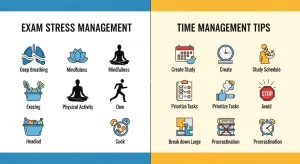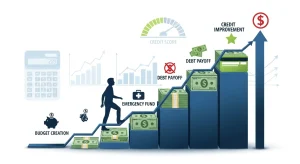📚 Introduction: What is Hybrid Learning?
Hybrid learning, also known as blended learning, is a modern educational model that combines traditional in-person classroom instruction with digital, remote learning experiences. With the rise of e-learning platforms and virtual classrooms, hybrid learning has emerged as a powerful solution to address the evolving needs of both students and educators in today’s tech-driven world.
🔍 Why Hybrid Learning is Gaining Popularity
The hybrid education model offers the best of both worlds—structured, face-to-face learning combined with the flexibility and accessibility of online resources.
Key Benefits of Hybrid Learning:
-
📅 Flexible scheduling for learners
-
🌐 Access to digital content anytime, anywhere
-
🎯 Personalized learning paths
-
🤝 Interactive collaboration with peers and teachers
-
💡 Cost-effective for institutions and students
Hybrid learning is especially beneficial for working professionals, college students, and K-12 learners who need adaptable study options.
Child Health & Nutrition: A Parent’s Ultimate Guide
🧠 How Hybrid Learning Works
🏫 In-Person Component:
-
Live lectures
-
Labs or practical sessions
-
Peer discussions
-
Exams or assessments
💻 Online Component:
-
Pre-recorded video lessons
-
Digital assignments and quizzes
-
E-learning tools like Google Classroom or Moodle
-
Live virtual classroom sessions via Zoom or Microsoft Teams
AI-Enabled Smart Gadgets: The Future of Everyday Living
🛠️ Top Online Learning Tools for Hybrid Education
| Tool Name | Features | Best For |
|---|---|---|
| Google Classroom | Assignment tracking, integration | Schools and colleges |
| Moodle | LMS for course delivery | Universities and institutions |
| Zoom | Live virtual classes | All levels |
| Edmodo | Social learning, parent interaction | K–12 |
| Canvas | Course design and grading tools | Higher education |
These online learning tools are essential to ensure smooth delivery in a hybrid classroom setup.
🌍 Hybrid Learning in Different Educational Sectors
🎓 Higher Education
Colleges and universities are increasingly adopting hybrid education models to reach international students and support working learners.
🧒 K-12 Education
Schools implement hybrid learning to continue lessons during school closures or provide enrichment outside traditional hours.
🧑💼 Corporate Training
Businesses use blended learning strategies to train employees across locations efficiently.
Digital Literacy & Safety for Kids: A Parent’s Guide to 2025
🏆 Advantages of the Hybrid Learning Model
-
Improved Accessibility: Students can learn at their own pace and review content as needed.
-
Enhanced Engagement: Combines multimedia, group projects, and interactive tools.
-
Data-Driven Feedback: Online assessments track progress and help tailor instruction.
-
Adaptable for All Learning Styles: Visual, auditory, and kinesthetic learners all benefit.
⚠️ Challenges of Hybrid Learning (and Solutions)
| Challenge | Solution |
|---|---|
| Digital divide | Provide school-issued devices/Wi-Fi |
| Lack of self-discipline | Regular check-ins and accountability tools |
| Teacher training gap | Invest in professional development |
| Engagement issues online | Gamify lessons, use interactive tools |
Despite the challenges, institutions can overcome barriers with the right planning and technology.
🙋♀️ FAQs About Hybrid Learning
1. What is the difference between hybrid learning and blended learning?
Answer: The terms are often used interchangeably. However, hybrid learning usually refers to a structured blend of in-person and online instruction, while blended learning may lean more toward online delivery with occasional face-to-face elements.
2. Is hybrid learning effective for young children?
Answer: Yes, with proper parental guidance and interactive content, hybrid learning for K–12 can be highly effective. Tools like Edmodo and interactive videos help maintain engagement.
3. What technology is needed for hybrid learning?
Answer: A stable internet connection, a digital device (tablet/laptop), access to an e-learning platform, and video conferencing tools are essential for participating in virtual classroom sessions.
✍️ Conclusion: Embracing the Future of Education
Hybrid learning is not just a trend—it’s the future of education. With flexibility, accessibility, and personalization at its core, it caters to the modern learner’s needs. Whether you’re an educator, student, or parent, embracing this model opens the door to a more dynamic and inclusive educational journey.
Start integrating hybrid learning today and unlock the full potential of education in the digital age!











